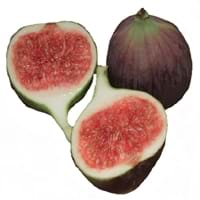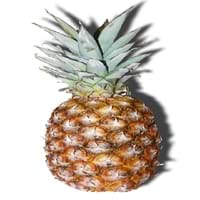Health Benefits
Cancer prevention, Controls blood pressure, Heart care, Increase in haemoglobin, Prevents constipation, Prevents macular degeneration, Reduces nervous tension
Asthma treatment, Bronchitis treatment, Cancer prevention, Heart care, Increases metabolic rate
General Benefits
Controls blood pressure, Helps in weight loss, Maintains healthy cholesterol level, Strengthens bones
Anti-inflammatory properties, Controls blood pressure, Digestive aid, Eye care, Healing of wounds, Maintains healthy cholesterol level, Strengthens bones, Treatment of sinusitis, Treatment of common cold
Skin Benefits
Brightens and lightens complexion, Hydrates skin, Skin rejuvenation, Treatment of acne
Anti-aging benefits, Brightens and lightens complexion, Skin cleansing, Treatment of acne, Treatment of dark spots
Hair Benefits
Good conditioner, Regulates hair growth, Softening mask
Prevents hair loss
Allergy Symptoms
Abdominal pains, Anaphylaxis, Coughing, Headaches, Hives, Itching, Nasal congestion, Skin rash, Sneezing, Sore throat, Swelling of hands
Abdominal pains, Itching in tongue and other parts of mouth, Sneezing, Swelling, Tingling sensation in wrist and face, Vomiting, Wheezing
Side Effects
Allergic reaction, Skin rash, Possibly unsafe during pregnancy
Causes swollen mouth, Allergic reaction, Diarrhoea, Nausea, Skin rash, Vomiting
Best Time to Eat
Best if taken as a breakfast (or empty stomach), Don't consume at night and before bed, Morning time (before lunch)
Best if taken as a breakfast (or empty stomach), As a snack in the late afternoon, Eat the fresh ones, avoid mixing with any other foods, don't eat after meal., Morning time (before lunch)
Vitamin B5 (Pantothenic Acid)
Vitamin C (Ascorbic Acid)
Vitamin K (Phyllochinone)
Calories in Fresh Fruit with Peel
Not Available
Calories in Fresh Fruit without Peel
Not Available
Type
Tree fruit
Berry, Tropical
Season
Summer, Winter
Autumn
Varieties
Abyad, Adriatic, Alma, Atreano, Bataglia, Black Bethlehem, Black Madeira, Black Mission, Brown Turkey, Sierra, Calimyrna, Kadota, Deanna, Figoin and Hardy Chicago Fig
Smooth Cayenne, Abacaxi, Red Spanish and Queen
Color
Green, Purple, Red
Yellow
Taste
Sweet
Strong, Sweet, Tart
Origin
Western Asia
Central America, South America
Grows on
Trees
Not Available
Soil Type
Clay, Limestone, Loam, Sandy
Clay, Sandy loam, Well-drained
Climatic Conditions
Dry, Warm
Hot, Sunny
Facts about
- Fig tree is considered as a symbol of abundance, fertility and sweetness.
- The fig is made up of 55% of natural sugar so they are the sweetest fruits.
- Figs are used as a fat substitute in recipes.
- A single pineapple takes 3 years to reach maturation.
- Pineapple is not an apple, but is actually a berry.
- The name is with reference to its resemblance to pine cones.
- Pineapple is sweeter if scales are more.
Top Producer
Turkey
Costa Rica
Other Countries
Albania, Algeria, Brazil, Egypt, Iran, Morocco, Syria, Tunisia, United States of America
Brazil, India, Philippines, Thailand
Top Importer
France
United States of America
Top Exporter
Turkey
Costa Rica
Botanical Name
Ficus carica
Ananas comosus
Synonym
Not Available
Ananas sativus
Subkingdom
Tracheobionta
Tracheobionta
Division
Magnoliophyta
Magnoliophyta
Class
Magnoliopsida
Liliopsida
Subclass
Alismidae
Commelinidae
Family
Moraceae
Bromeliaceae
Species
Ficus carica
A. comosus
Generic Group
Mulberry
Pineapple
Difference Between Fig and Pineapple
We might think that Fig and Pineapple are similar with respect to nutritional value and health benefits. But the nutrient content of both fruits is different. Fig and Pineapple Facts such as their taste, shape, color, and size are also distinct. The difference between Fig and Pineapple is explained here.
The amount of calories in 100 gm of fresh Fig and Pineapple with peel is 74.00 kcal and Not Available and the amount of calories without peel is Not Available and 50.00 kcal respectively. Thus, Fig and Pineapple belong to Low Calorie Fruits and Low Calorie Fruits category.These fruits might or might not differ with respect to their scientific classification. The order of Fig and Pineapple is Rosales and Poales respectively. Fig belongs to Moraceae family and Pineapple belongs to Bromeliaceae family. Fig belongs to Ficus genus of Ficus carica species and Pineapple belongs to Ananas genus of A. comosus species. Beings plants, both fruits belong to Plantae Kingdom.









